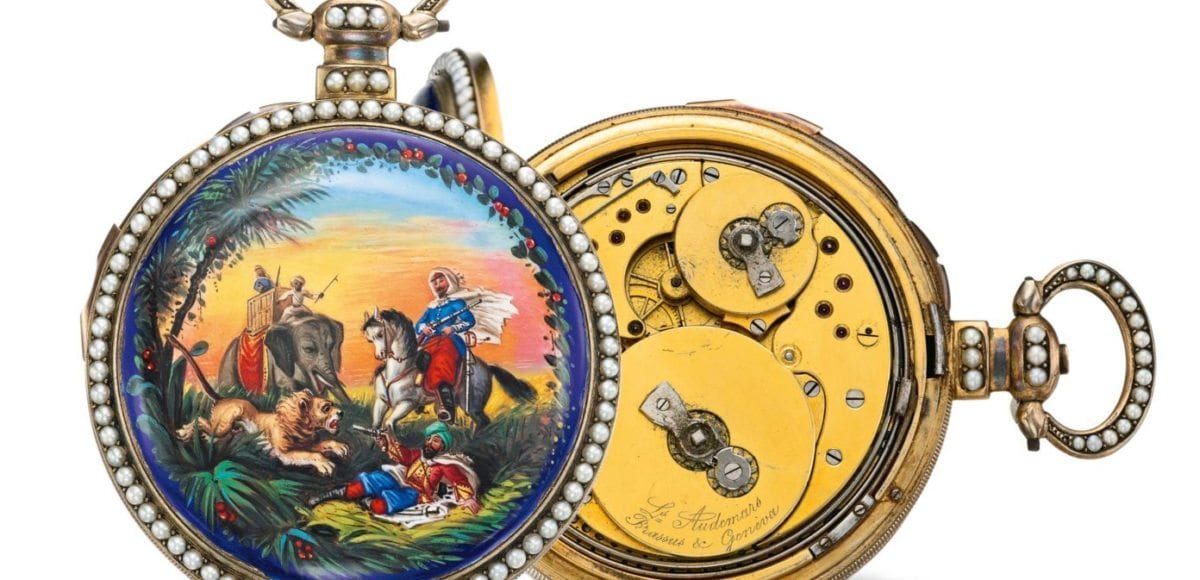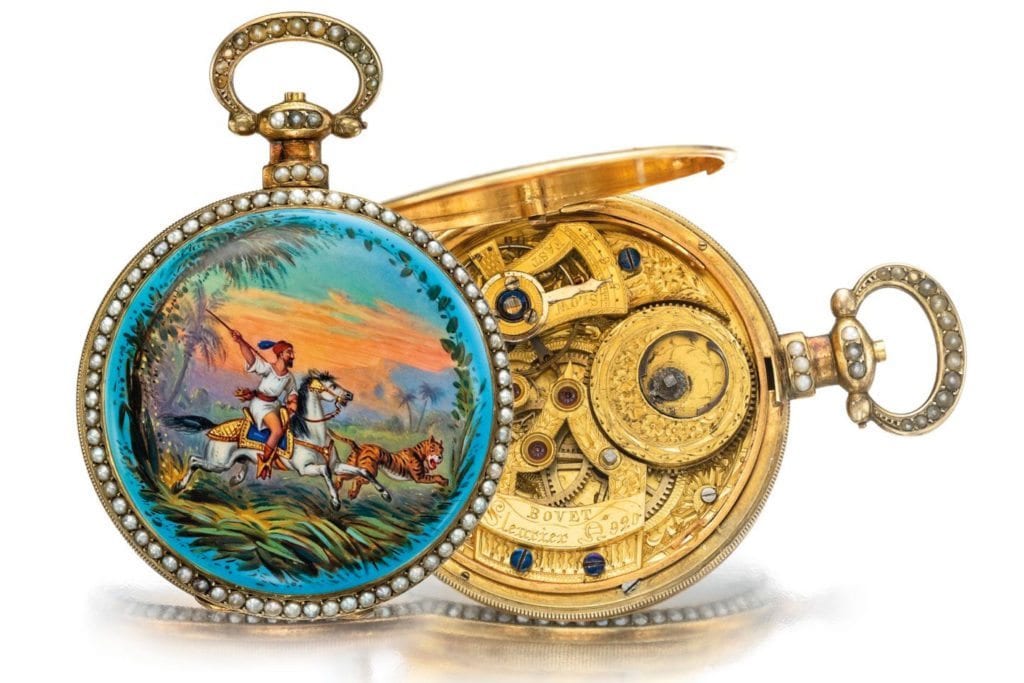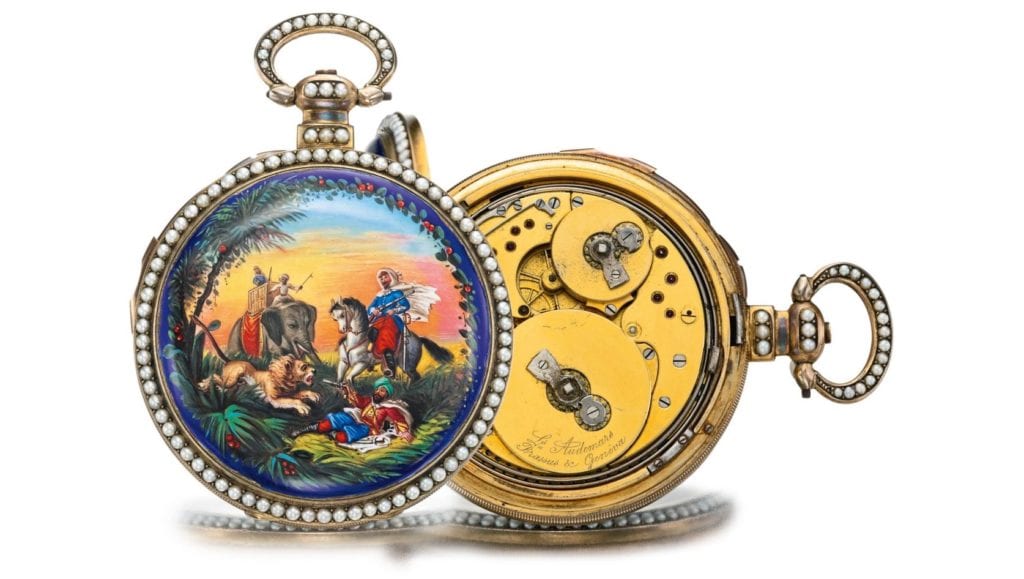In the early 1600’s, a man named Matteo Ricci traveled to the court of Chinese Emperor Wanli. Ricci had mastered the emperor’s native language, Mandarin, and brought him many gifts, including two lavish mechanical clocks that chimed on the hour. His intention was to convert the Chinese aristocracy, and eventually the entire population, to Roman Catholicism. Instead, he unknowingly spurred the enduring love affair between the Chinese and Western-made clocks and pocket watches.
Before Ricci’s arrival, the Chinese used simple water clocks to keep time. The interest in the clocks Ricci brought and the subsequent rise in demand for Western timepieces that followed reflected the desires of the Chinese upper class, who sought to gain status and power by acquiring imported, advanced, and beautiful technologies.
The Rise and Fall of Chinese Caliber Watches
The European market seized the opportunity to profit off the Chinese. By the 1700’s, England had dominated the market and established itself as the international watch powerhouse. They started producing watches specifically for the Chinese market, with designs that appealed to the tastes of the Chinese elite. These timepieces became known as Chinese caliber watches.

A gold and enamel watch by Ilbery of London ca. 1790.
By the turn of the nineteenth century, Switzerland had begun to make a name for itself in the Chinese market. At the time, Swiss watchmakers were often farmers who needed to supplement their income during the winter months, so they worked for less than their English counterparts. They also began setting up offices in London, which allowed their products to be classified as “made in London” even though they still used parts imported from Switzerland. Swiss watchmakers continued to expand their venture by focusing on a different sector of the market. The English had monopolized imports to the imperial court, so the Swiss looked to other affluent members of Chinese society, set up Swiss shops on Chinese soil, and started serving a wider scope of wealthy buyers.
Over the years, Western craftsmen trained Chinese locals in the art of watchmaking, and some workshops were established in China. However, the timepieces produced locally did not have the same elusive or exotic appeal to the Chinese elite until the late nineteenth century, when the demand for these ornate timepieces was beginning to dwindle. Ultimately, the mass production of pocket watches and, later, the growing popularity and prevalence of wristwatches forced these once-booming Chinese caliber watchmakers out of business.
Recovering a Piece of the Past
For decades, watches made for the Chinese market were undervalued and under-appreciated. In the late twentieth century, these timepieces could be purchased for nominal amounts. Then, at the turn of the twenty-first century, demand for Chinese caliber watches began to resurface. As early as 2001, antique watch dealers started to see an increased interest in watches originally made for the Chinese market. A growing number of young, Chinese collectors were looking to embrace an untapped market and to buy back a piece of their country’s heritage.
By 2008, it was clear the demand for these timepieces was shifting, and by 2010, Chinese caliber watches were bringing in double or triple what they would have in previous years. The most valuable pieces are from the peak of production and demand, around 1750-1850. A basic Chinese market watch without much intricacy could now sell for around $40,000. However, a very detailed enameled gold watch with complicated designs and elaborate scenes could easily sell for up to $200,000. If the watch includes moving figures or a singing bird, the value could reach half a million or even a million dollars, depending on its condition.
In 2012, the value of Chinese caliber watches started to hit new records. A collection of fifteen vintage pocket watches, fourteen of which were made for the Chinese market, sold for $2.4 million at Christie’s. This was five times more than the auction house’s high estimate. The bidders for these watches and others like them are predominantly Chinese connoisseurs, along with a few Western buyers, namely museums and other select collectors.
What Makes a Chinese Caliber Watch?
What differentiates watches made for the Chinese market from watches made for the Western market is mainly design and size. Chinese caliber watches are typically ornate and characterized by beautifully enameled scenes, foliate designs, and decorative engravings. Each watch took about two years to make, depending on the intricacy of the enamel work. Chinese caliber watches were often collaboratively designed, combining the enamel work, goldsmith and silversmith work, and work by jewelers. The more elaborately decorated, the better.
Watches for the Western market were more utilitarian and less opulent. They were used for practical purposes and were valued more for their functionality than their aesthetics. Timepieces for the Western market were also significantly smaller, measuring around an average of forty to forty-five millimeters as opposed to Chinese market watches, which typically measure an average of fifty-five to sixty millimeters.
Finding Their Place in History
When they were first created, Chinese caliber watches appealed to the Chinese elite because they not only featured lavish designs but also depicted foreign lands, exotic landscapes, and a Western lifestyle. These watches quickly became a part of Chinese culture, appearing in both Chinese literature and paintings. Now, these timepieces are alluring to modern Chinese collectors because of their historical significance. Watches made for the Chinese market represent an important part of Chinese heritage, and today’s generation of Chinese connoisseurs are looking to buy back a piece of the past. Although it has taken many years for these timepieces to be recognized for their value and influence, it appears that they are once again finding their place in history.
Image Credits: Header, 2-3; Sothebys. 1; Wall Street Journal.
Get More Articles Like This in Your Inbox
We're constantly creating great content like this. So, why not get it delivered directly to your inbox? By subscribing you agree to our Privacy Policy but you can unsubscribe at any time.








